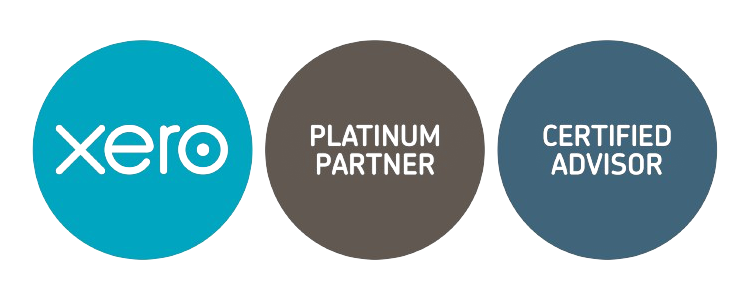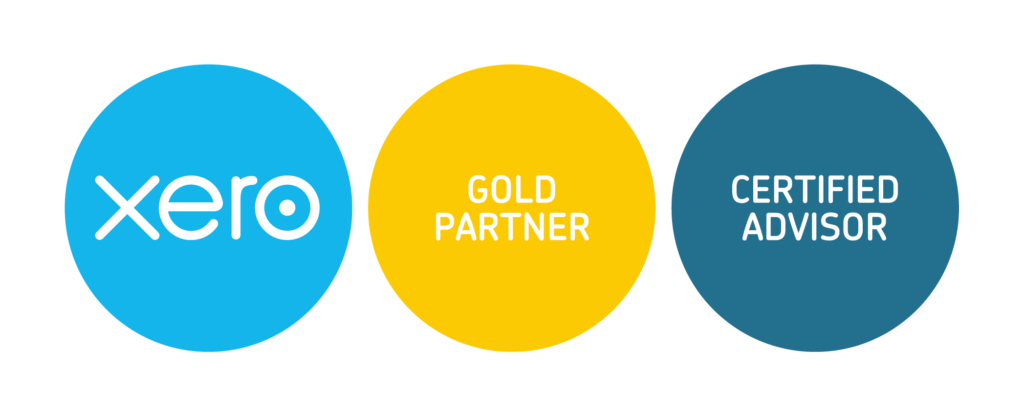CFO GROUP INTEGRATED SERVICES
Master Google SEM: Strategies for Success and Growth
CMO Media Lab Pte Ltd • June 27, 2024
Google SEM (Search Engine Marketing) uses paid ads to boost your business visibility on Google search results. It ensures you reach potential customers exactly when they search for your products or services, driving immediate traffic to your website.
Key Takeaways
- Google SEM combines paid advertising techniques to increase visibility on search engine results pages, differing from SEO, which focuses on organic rankings.
- Setting up and managing effective Google Ads campaigns involve strategic keyword research, structured ad placement, and continuous optimization to maximize return on investment.
- Advanced tools like SEMrush, Google Trends, and SpyFu are essential for refining keyword strategies, competitive analysis, and enhancing overall SEM performance.

1 Understanding Google SEM
Imagine stepping into a bustling market, your pockets brimming with coins, each one with the power to bring customers flocking to your stall. In the digital marketplace, Google SEM is that currency. It’s a fusion of tactics and tools designed to make your business’s offerings highly visible on search engine results pages (SERPs) through the power of paid advertising. As you navigate the crowded streets of the internet, Google SEM is your loudspeaker, amplifying your presence above the chatter, ensuring that when potential customers are searching, it’s your name they see first.
You might wonder why Google SEM is so vital for flourishing in this digital era. The answer lies in its ability to:
- Cut through the noise and place your products and services right under the spotlight
- Reach potential customers at the exact moment they express the intent to buy or learn more
- Strategically place your ads at the top of the SERP, towering over the organic results
- Make all the difference in a competitive online world
Utilizing the full spectrum of Google SEM means more than just purchasing ad space; it’s an investment in your business’s growth and a method to amplify your voice.
Definition of Google SEM
At its core, Search Engine Marketing (SEM) is the art of visibility in search engines, where businesses use paid advertisements to appear on search engine results pages. But when we zoom in on Google SEM, we’re referring to the utilization of Google’s expansive search engine advertising network to capture the attention of your audience through carefully placed ads.
Unlike search engine optimization (SEO), which focuses on earning traffic through unpaid or free listings, SEM buys its way to the top. By injecting SEM strategies into your marketing mix, you’re leveraging a powerful toolkit that enables immediate visibility, directly in the line of sight of your potential customers. Some key benefits of SEM include:
- Increased brand exposure
- Targeted advertising
- Quick results
- Measurable ROI

Importance of Google SEM
Why does Google SEM matter? Think of it as a fast-pass ticket, directing you straight to your target audience. SEM’s precision allows you to:
- Present your brand at the very moment a potential customer is searching for your products or services
- Increase traffic that’s ripe with intent to engage, inquire, or purchase
- Have complete control over your advertising budget through the pay-per-click (PPC) model of SEM
- Bid on ad space and measure the impact of every dollar spent
In the competitive landscape of digital marketing, SEM emerges as a lighthouse, guiding targeted, cost-effective, and quantifiable advertising.

How Google Ads Work
Diving into the mechanics of Google Ads is like opening the hood of a car—it’s where the real power lies. Google Ads operates on a simple yet profound premise: it seeks to match user search queries with the most relevant ads and landing pages. This means when someone types in a search term related to your business, Google Ads can catapult your ad to the top of their search results, provided you’ve crafted your campaign effectively. By appearing on Google’s search results, partner sites, and other properties like YouTube and Gmail, your ads gain the potential to reach an immense audience across a diverse digital landscape.
Google Ads is not solely about visibility; it’s about connecting with the right audience at the perfect moment. With the ability to target specific demographics, locations, languages, and devices, this platform empowers you to tailor your advertising efforts to the audience segments that matter most to your business. And with the pay-per-click (PPC) pricing model, you’re only paying when interested users take action, making Google Ads a highly cost-effective way to drive relevant traffic to your site using Google AdWords.
Google Ads Basics
Stepping into the world of Google Ads, you’re presented with an array of features designed to launch your digital advertising into orbit. Google Ads is not just a platform; it’s a comprehensive SEM toolbox that stretches across the expanse of Google Search and the Display Network. It’s where your ad clicks translate into potential customer interactions, and where there’s no minimum spending requirement, giving you the flexibility to start small and scale up as you see fit.
Whether you’re crafting your first ad or refining your thousandth, Google Ads stands ready to elevate your paid search marketing efforts to new heights.
Setting Up a Google Ads Account
Establishing a Google Ads account marks the beginning of your journey to unleash the potential of Google SEM. It’s a straightforward journey that begins with your existing Google account, leading you through the selection of campaign goals tailored to your business’s unique needs.
Whether you’re aiming to drive website traffic, increase sales, or generate leads, Google Ads allows you to:
- Specify where your ads should appear, honing in on the geographic territories that align with your market
- Configure your account and set your goals
- Embark on an Google SEM campaign that can transform your online presence
Types of Google Ads
Google Ads offers a rich tapestry of ad types, each with unique features designed to meet different marketing objectives. Search Ads, with their text-based simplicity, appear when users search for terms related to your business, delivering concise messages at the moment of intent.
Display Ads, on the other hand, are the billboards of the digital world—visual ads that can capture attention across the vast network of websites affiliated with Google. And for those in the retail space, Shopping Ads put your products front and center, providing detailed information and images to shoppers ready to make a purchase.
Each ad type plays a strategic role in your SEM toolkit, enabling precise targeting, engagement, and conversion.

Keyword Research for Google SEM
Embarking on keyword research is akin to mining for gold; it’s the meticulous search for the phrases that will lead the most interested prospects to your digital doorstep. The appropriate relevant keywords serve as lighthouses, leading your target audience across the vast internet directly to your content. By focusing on terms that strike a chord with your audience, you maximize your ad spend, ensuring your SEM efforts reach the right audience. And as you delve deeper, you’ll uncover the power of negative keywords—those irrelevant terms that, once excluded, refine your targeting and save precious ad dollars.
But keyword research isn’t just about identifying what to target; it’s also about understanding what to avoid. General terms with broad intent can lead to high costs without the desired sales, while highly specific keywords can yield targeted traffic ready to engage with your business. By experimenting with different keyword match types, such as broad, phrase, or exact match, you can fine-tune your campaign for better conversion rates, ensuring that your ad spend translates into tangible results.
Using Google Ads Keyword Planner
Google Ads Keyword Planner is an essential compass in the Google SEM journey, guiding you through the landscape of keyword possibilities. Upon entering basic keywords or your website URL, the tool reveals a map of associated terms, including their search volumes and trends. It’s here that you can uncover keywords with commercial intent—those precious phrases that signal a higher probability of conversion.
Publishing content on an industry-related topic at least once a week can help build authority with Google algorithms. Regularly checking for changes in keywords and searcher intent impacts the ranking and the way older posts are updated. Content production is important to become the most trusted resource within your niche and to prioritize your site in SERPs.
Analyzing Keyword Competitiveness
Analyzing keyword competitiveness is a strategic game of chess, where each move is calculated to outmaneuver the competition. It’s about understanding which battles are worth fighting and which are better left uncontested. Tools like SpyFu can offer a glimpse into your competitor’s playbook, revealing both their successful maneuvers and their missteps in the realm of keywords.
By carefully selecting keywords that balance search volume with competition, you position your SEM campaigns to capture the attention of your audience effectively, ensuring that your ad dollars are spent wisely.
Negative Keywords
In the art of Google SEM, knowing what to exclude is just as important as knowing what to include. Negative keywords act as filters, ensuring that your ads don’t show up in response to irrelevant search queries. By diligently curating your list of negative keywords, you protect your budget from being depleted by unwanted clicks, focusing your resources on the audience segments that are most likely to convert.
Regular updates to your negative keyword list are essential to maintaining an efficient and cost-effective campaign, as they help to refine your targeting, improve your ad relevance, and elevate the overall performance of your SEM efforts.

Creating Effective Google SEM Campaigns
Creating an efficient Google SEM campaign involves the following steps:
- Set definitive objectives that align with your business goals.
- Define the audience you want to reach.
- Craft a message that resonates deeply with your audience.
- Allocate your budget in a way that maximizes impact across multiple campaigns.
By following these steps, you can create a successful Google SEM campaign that drives results for your business.
By guiding your ads to the most appropriate landing pages, you curate a seamless user journey that engages and motivates action, boosting conversion rates and strengthening your SEM success. But a successful Google SEM campaign doesn’t just happen; it’s sculpted with deliberate care.
It’s about structuring your Google Ads account so that your campaigns are logically grouped, ensuring strategic, targeted bidding that drives higher click-through rates and lowers costs-per-click. Within each campaign, ad groups are carefully themed, with keywords that are closely related to the ad text, fostering a cohesive and compelling narrative that engages users and encourages clicks.
By integrating a variety of ad formats and using optimized ad rotation, your Google SEM campaigns become dynamic, living entities that evolve with user interaction and feedback, ensuring ongoing relevance and performance.
Structuring Your Google Ads Campaign
Building the structure of your Google Ads campaign resembles constructing a house—each piece must be intentionally placed to uphold the overall framework. By organizing campaigns around different products or services, you can manage budgets and targeting with precision, ensuring that each ad group focuses on a specific theme.
Within these groups, including at least three ads and leveraging optimized ad rotation, you create an environment where the best-performing ads flourish, driving better results and contributing to the success of your SEM strategy.
Crafting Compelling Ad Copy
Writing compelling ad copy requires a knack for grabbing attention and motivating action. A catchy headline and a clear, engaging description are the hooks that draw your audience in, while a strong call-to-action is the nudge that prompts them to click.
By highlighting unique selling points, you differentiate your ads from the competition, and the use of emotional triggers can further enhance user interest and engagement. A well-crafted ad is not just a means of communication—it’s a catalyst for connection and conversion.
Utilizing Ad Extensions
Ad extensions are the finishing touches that complement your ads, boosting their visibility and offering more information to prospective customers. With options such as:
- Callout extensions to spotlight key benefits
- Sitelink extensions to improve website navigation
- Structured snippets to showcase aspects of your offerings
Ad extensions make your ads more comprehensive and attractive.
When used effectively, these extensions can increase the real estate your ad occupies on the SERP, making your presence more prominent and persuasive.
The Ad Auction Process
Entering the ad auction process is like stepping into a busy stock exchange, where every bid and quality score can tip the balance towards your ad’s visibility. At the heart of SEM lies the ad auction—a dynamic marketplace that determines which ads ascend to the top of the search engine results pages. Google’s ad auction is an intricate dance that unfolds every time a search query is entered, evaluating the maximum bid and Quality Score to decide which ads earn the spotlight and in what order.
Understanding the ad auction process is paramount for navigating the competitive seas of SEM. It’s a system where not just the highest bidder wins but also the relevance and quality of ads play a pivotal role in their ultimate placement on the SERP. By mastering the ins and outs of the auction, you can effectively manage your bidding strategy, ensuring that your ads are not only seen but also clicked by users who are most likely to convert.
Bidding Strategies
Creating a successful bidding strategy involves understanding when to stay steady and when to act swiftly. Bid adjustments allow you to optimize ad placement based on user behavior and the context of their searches, ensuring that you’re visible to the right people at the right times.
With automated bidding strategies, such as Enhanced CPC (eCPC), Google Ads can adjust your bids in real-time, maximizing the chances of conversion by taking into account the likelihood of each click leading to a desired action.
Quality Score Factors
In Google SEM, the Quality Score acts as a beacon guiding ships safely to shore—it highlights the pathway to superior ad positions and reduced costs. This metric is a barometer of the health of your ads, keywords, and landing pages, impacting where and how your ad appears in search results. A high Quality Score can be the wind in your sails, leading to improved placements and diminished average cost-per-click, thereby enhancing your overall ad performance.
By focusing on factors like ad relevance, expected click-through rate, and landing page experience, you can raise your Quality Score and, in turn, your campaign’s success.
Optimizing Google SEM Performance
Enhancing Google SEM performance is a constant process of betterment and evolution. It’s about distilling the metrics that matter—click-through rate (CTR), conversion rate, and return on ad spend (ROAS)—into actionable insights that drive your campaigns forward. This is not a realm for the faint of heart; it demands a long-term commitment, a willingness to develop skills, and a patient mastery of Google SEM fundamentals. By engaging in meticulous optimization, you sharpen the effectiveness of your campaigns, rapidly eliminating strategies that miss the mark and scaling those that resonate with your audience.
Fine-tuning your Google SEM performance is akin to adjusting a telescope to the stars; it requires precision and attention to detail. Here are some strategies to consider:
- Implementing proper bid management can greatly enhance the efficiency of your campaigns.
- Finding the optimal time of day for ad interactions can lead to heightened visibility and improved lead quality.
- Testing variations in your product names within PPC ads can also have a significant impact on performance, as specific keywords can be the catalyst for better results.
- Even the use of specific numbers in ad copy can enhance credibility and click-through rates, showcasing the myriad ways in which a keen eye for detail can lead to Google SEM excellence.
Monitoring and Analyzing Metrics
Monitoring and assessing your Google SEM campaign metrics is akin to mapping a course through unknown waters—it offers guidance and insight into your journey’s progress. Key metrics to consider include:
- Click-through rate (CTR)
- Impressions
- Conversion rate
- Return on Ad Spend (ROAS)
These metrics offer a glimpse into user engagement and measure the effectiveness of your ads in driving business outcomes.
By tracking on-page analytics and adjusting your campaigns based on these metrics, you can continually optimize performance, ensuring that your Google SEM efforts are not only seen but also deliver tangible results.
A/B Testing Ads
A/B testing ads is similar to conducting experiments in a digital lab, where each variant is examined to identify the most successful formula. By comparing different headlines, descriptions, and calls-to-action, you can identify the elements that resonate most strongly with your audience.
This process of continuous testing and refinement is critical for optimizing ad effectiveness, allowing you to hone your message and maximize the impact of your Google SEM campaigns.
Improving Landing Page Experience
The landing page experience represents the user’s journey’s final stretch and its optimization is vital for converting interest into action. Here are some key elements to consider for your landing page:
- Align your landing page content with your ad copy to create a seamless transition that enhances conversion rates.
- Include a clear and relevant call-to-action that can be the deciding factor in converting a visitor.
- Consider including a phone number or a compelling thank you page to further increase lead generation and customer engagement.
By focusing on the landing page experience, you ensure that the effort and budget invested in your Google SEM campaigns culminate in the desired outcome—conversions.
Advanced Google SEM Tools
As you fine-tune your Google SEM strategy, advanced tools such as SEMrush and SpyFu emerge as indispensable allies, providing in-depth insights into keyword research, competitor analysis, and optimization opportunities. These tools are the instruments that can fine-tune your approach, uncovering hidden gems of insights that can propel your campaigns to new heights.
With WordStream, you gain an advertising management solution that assists with research, tracking, and optimizing ads—a trinity of capabilities that can sharpen your Google SEM edge.
SEMrush
SEMrush stands as a titan in the world of SEM, offering a suite of tools that can illuminate the path to keyword success. One of the cornerstone tools of SEMrush is the Keyword Magic Tool. With this tool, you can:
- Unearth the most profitable keywords from a single seed
- Discover new keyword ideas and variations
- Analyze keyword difficulty and competition
- Find long-tail keywords with high search volume
- Refine your keyword strategy and optimize your campaigns
The Keyword Magic Tool opens a world of possibilities for your campaigns and helps you stay ahead of the competition.
With access to billions of keywords across 142 databases, SEMrush provides a panoramic view of the keyword landscape, enabling you to target featured snippets and capture the attention of your desired audience.
Google Trends
Google Trends is the telescope that allows you to gaze into the search universe, revealing the ebb and flow of keyword popularity over time and across regions. By harnessing this tool, you can track the trajectory of specific keywords, adapting your SEM campaigns to align with peak search times and locations.
Google Trends offers a window into the zeitgeist of search behavior, allowing you to tailor your strategies to the rhythms of your audience’s interests and needs.
SpyFu
SpyFu is the reconnaissance mission that grants you insight into your competitors’ SEM tactics. It reveals every keyword purchase and ad test run, offering a comprehensive view of their Google Ads history. With SpyFu, you can identify trends in ad spending and performance, allowing you to adapt your strategy with precision.
Moreover, its domain leads and top lists feature enable you to create custom lists of domains filtered by industry, location, ad spend, and more, while providing reliable contact information to help build partnerships or generate sales leads.
Summary
In the vast ocean of digital marketing, mastering Google SEM is like captaining a ship with the wind at your back. From understanding the basics of SEM to leveraging advanced tools like SEMrush and SpyFu, this blog post has charted a course through the intricacies of Google Ads, keyword research, and campaign optimization. Embrace these strategies, and you’ll navigate the waters of online search with confidence, steering your business toward growth and success in the digital marketplace.
Get Your Google Ads Strategy Now
Experience online growth with our professional Google Ads services. We aim to improve your ad performance, drive conversions, and maximize ROI. Contact us today to discuss your Google Ads strategy and start seeing results.
Frequently Asked Questions (FAQs)
How does Google SEM work?
Google SEM works by using keywords to create relevant content and ads aimed at attracting the target audience. The use of the right keywords in the right places is crucial for appearing prominently in search results.
How can I balance my Google SEM strategy between SEO and PPC?
To balance your Google SEM strategy, use SEO to establish long-term organic traffic and PPC for immediate visibility and targeted traffic. Adjust the allocation based on your business goals and budget.
What is the best way to measure the success of my Google SEM campaigns?
The best way to measure the success of your Google SEM campaigns is to use metrics such as click-through rate, conversion rate, return on ad spend, and Quality Score. Analyze these metrics regularly for campaign optimization.
How often should I review and adjust my Google SEM campaigns?
You should review and adjust your Google SEM campaigns at least monthly, or more frequently if there are significant changes in campaign performance metrics. Regular reviews can help optimize the effectiveness of your campaigns.
Can I perform Google SEM without a large budget?
Yes, you can perform Google SEM with a modest budget by focusing on highly targeted keywords and scaling up as you see a return on investment.










